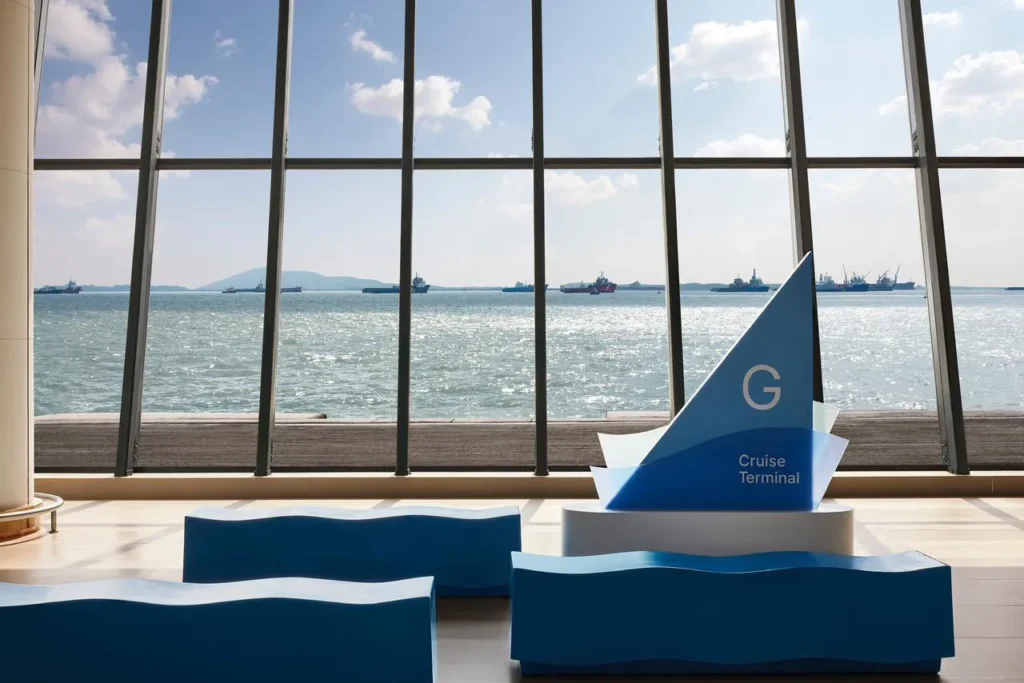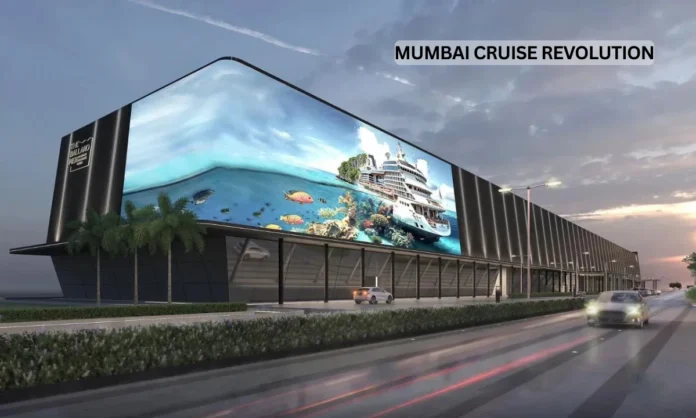Key Highlights:
- Mumbai International Cruise Terminal inaugurated at Indira Dock spans 415,000 sq ft with Rs 556 crore investment, capable of handling 1 million passengers annually
- Terminal features 72 check-in counters, five simultaneous ship berthing capacity, and handles vessels up to 300 meters in length with 11 meters draft
- Project launched alongside maritime sector initiatives worth Rs 7,870 crore across multiple Indian ports as part of PM Modi’s comprehensive development program
Opening Overview
Prime Minister Narendra Modi inaugurated the Mumbai International Cruise Terminal today, marking a watershed moment for India’s maritime infrastructure and positioning Mumbai as a global cruise tourism destination. The state-of-the-art facility at Indira Dock represents India’s largest cruise terminal, built at a cost of Rs 556 crore and designed to accommodate up to 1 million passengers annually. This Mumbai International Cruise Terminal inauguration forms part of the ambitious ‘Samudra se Samriddhi’ program in Bhavnagar, Gujarat, where PM Modi unveiled development projects worth over Rs 34,200 crore across multiple sectors. The Mumbai International Cruise Terminal stands as a testament to India’s growing maritime capabilities, featuring cutting-edge infrastructure that can simultaneously berth five cruise ships and process approximately 10,000-15,000 passengers daily.
On Saturday 20 September Mumbai will get a magical modern cruise terminal.
— Kanchan Gupta 🇮🇳 (@KanchanGupta) September 19, 2025
Prime Minister @narendramodi will be inaugurating the state-of-the-art Mumbai International Cruise Terminal. pic.twitter.com/643nqlw0LG
Technical Specifications and Infrastructure Details
The Mumbai International Cruise Terminal encompasses an impressive 415,000 square feet of operational space across four levels (G+3 structure), establishing itself as India’s premier cruise facility. The terminal’s technical specifications include the capacity to handle vessels up to 300 meters in length with an 11-meter draft, accommodating some of the world’s largest cruise liners. Infrastructure highlights of the Mumbai International Cruise Terminal include 72 dedicated check-in and immigration counters designed to streamline passenger processing and reduce waiting times significantly.

The facility features 22 elevators, 10 escalators, and multi-storied parking facilities for over 300 vehicles, ensuring seamless accessibility for passengers and visitors. The Mumbai International Cruise Terminal’s operational area spans approximately 170,000 square feet with year-round functionality designed to meet demanding global cruise schedules.

Mumbai International Cruise Terminal’s impressive specifications showcase its capacity to handle 1 million passengers annually with world-class infrastructure facilities
- Terminal specifications support five simultaneous cruise ship operations with advanced berthing facilities
- Processing capacity reaches 1 million passengers annually through efficient counter systems and streamlined operations
- Advanced infrastructure includes wave-inspired ceiling design, blue benches, and panoramic sea-view glass facades
- Dedicated vehicle parking accommodates 300+ cars with convenient passenger access systems
Investment Framework and Development Timeline
The Mumbai International Cruise Terminal project represents a total investment of Rs 556 crore, developed under India’s ambitious port modernization initiative. According to Mumbai Port Authority data, the original project cost was estimated at Rs 495 crore in 2022, with Rs 303 crore allocated to Mumbai Port Authority and remaining funds from private operators. The Mumbai International Cruise Terminal development timeline began in 2022 with commissioning originally planned for July 2024, though operations commenced in April 2025 under Union Minister Sarbananda Sonowal.

This Mumbai International Cruise Terminal forms part of the broader Cruise Bharat Mission, designed to establish India as a leading global cruise tourism destination. The facility’s development aligns with the government’s Sagarmala Programme, focusing on port-led development to reduce logistics costs and enhance maritime trade capabilities.
| Investment Component | Amount (Rs Crore) | Funding Source |
|---|---|---|
| Mumbai Port Authority | 303 | Government |
| Private Operators | 193 | Private Investment |
| Total Project Cost | 556 | Public-Private Partnership |
| Maritime Sector Projects | 7,870 | Central Government |
Economic Impact and Tourism Potential
The Mumbai International Cruise Terminal is positioned to generate substantial economic benefits for India’s growing cruise tourism sector, currently valued at USD 138.8 million in 2024. Market projections indicate India’s cruise tourism industry will reach USD 322.6 million by 2030, growing at a compound annual growth rate of 15.1 percent. The Mumbai International Cruise Terminal’s capacity to handle 1 million passengers annually positions India to capture a larger share of the global cruise market, where the country currently accounts for 1.6 percent of worldwide revenue.
Research indicates that every rupee invested in shipbuilding and maritime infrastructure generates nearly double the economic return, with significant multiplier effects across allied industries. The Mumbai International Cruise Terminal’s strategic location enables Mumbai to compete with established cruise hubs globally, potentially attracting major international cruise lines and generating substantial foreign exchange earnings.

India’s cruise tourism market is projected to grow from $138.8 million in 2024 to $322.6 million by 2030, representing a 15.1% compound annual growth rate
- Annual passenger capacity of 1 million creates significant employment opportunities across tourism and hospitality sectors
- Economic multiplier effects extend to steel, machinery, electronics, textiles, and IT systems industries
- Enhanced cruise tourism infrastructure supports India’s goal to triple maritime trade participation by 2047
- Strategic positioning connects domestic cruise operations with international routes across Indian Ocean regions
Strategic Maritime Development Initiative
The Mumbai International Cruise Terminal inauguration coincides with PM Modi’s comprehensive maritime sector reforms worth Rs 7,870 crore across multiple Indian ports. These initiatives include new container terminals at Syama Prasad Mookerjee Port in Kolkata, cargo handling facilities at Paradip Port, and the Tuna Tekra Multi-Cargo Terminal development. The Mumbai International Cruise Terminal represents a cornerstone of India’s maritime infrastructure modernization, supporting the government’s vision of reducing dependence on foreign shipping companies. PM Modi announced that India currently pays approximately $75 billion annually to foreign shipping companies, equivalent to the nation’s defense budget, highlighting the strategic importance of developing domestic maritime capabilities.
The Mumbai International Cruise Terminal contributes to India’s goal of increasing its share of global maritime trade from the current 10 percent while building self-reliant shipping and port infrastructure.
Closing Assessment
The Mumbai International Cruise Terminal inauguration marks a transformative milestone in India’s maritime development strategy, establishing Mumbai as a premier cruise tourism destination with world-class infrastructure capabilities. This facility’s 1 million passenger annual capacity, combined with advanced berthing systems for five simultaneous cruise operations, positions India to compete effectively in the rapidly growing global cruise tourism market. The Mumbai International Cruise Terminal’s Rs 556 crore investment demonstrates India’s commitment to building self-reliant maritime infrastructure while reducing dependence on foreign shipping services. As part of the broader Rs 7,870 crore maritime development program, this Mumbai International Cruise Terminal represents a strategic step toward PM Modi’s vision of making India’s coastlines gateways to national prosperity by 2047.


